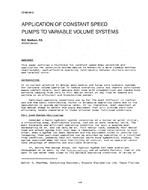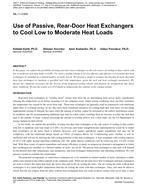An understanding of the details of air motion around and into supply/exhaust devices is important in the design and application of kitchen hoods. However, measurement and visualisation of such air movement in laboratory environment are difficult and expensive. Theoretical analysis of complex turbulent mixed flows is not possible at this time, but a promising technique for study of air movement details involves numerical simulation that is termed computational fluid dynamics (CFD). Presents results of CFD simulations of two-dimensional (planar) air motion in the vicinity of cooking surfaces, as modified by the presence of kitchen hoods of various designs. The CFD simulation codes are of new finite-element design, developed with partial support from ASHRAE Research Project RP-464. Benchmark tests were conducted to determine suitable locations for farfield boundary conditions, with and without a thermal plume present. Two commercial hood designs were then modelled, with suitable meshings created to account for their geometrical and flow-bifurcation complexity. CFD simulations were conducted for a range of effective Reynolds numbers and for several Archimedes numbers. These results are compared and discussed.
KEYWORDS: calculating, kitchens, exhaust hoods, commercial, air movement, air flow, testing, Reynolds numbers, Archimedes numbers, comparing
Citation: ASHRAE Trans 1992, vol.98, Part 1, Paper number AN-92-16-4, 1219-1226, 12 figs., refs.
Product Details
- Published:
- 1992
- File Size:
- 1 file , 1.1 MB
- Product Code(s):
- D-18124


